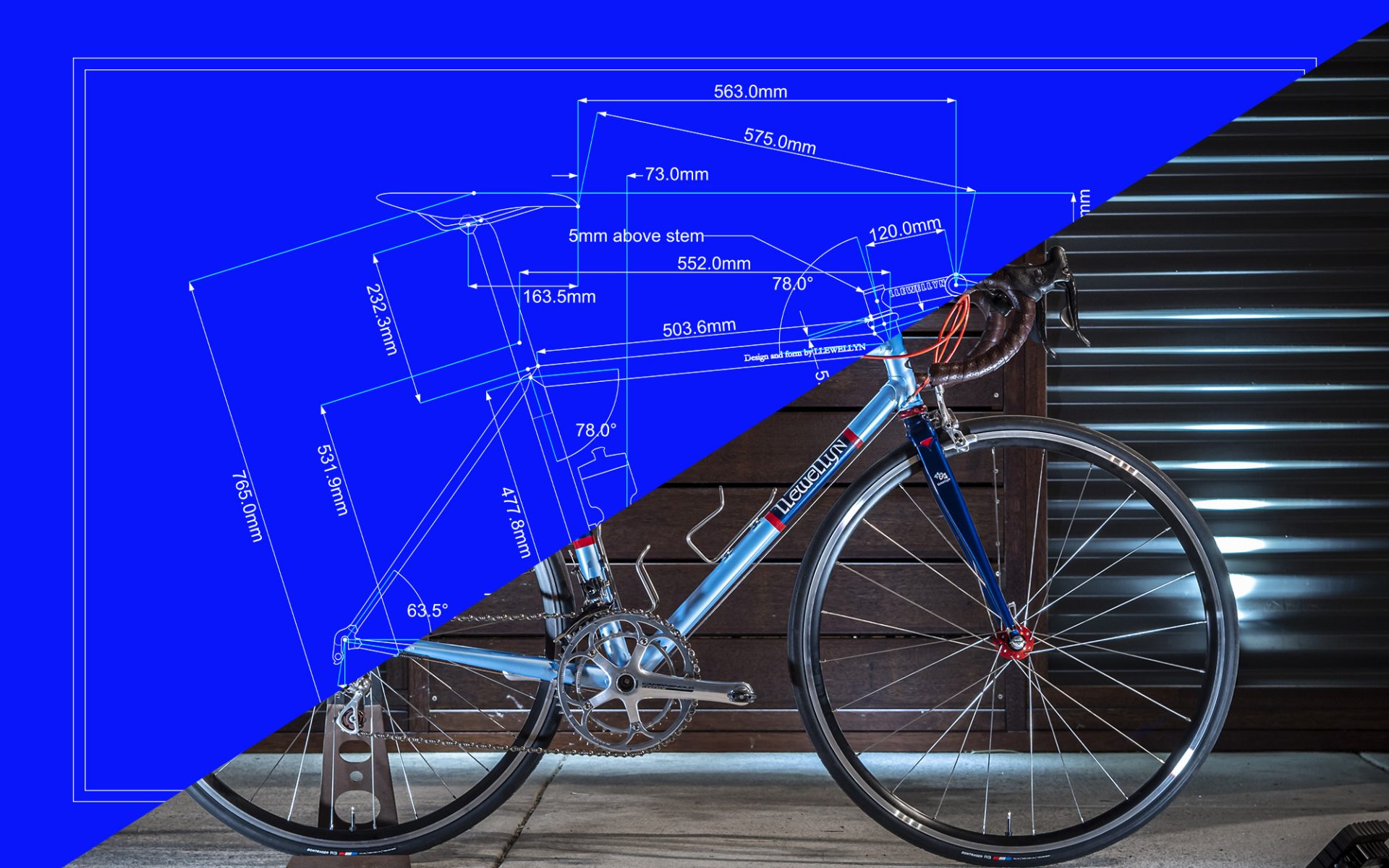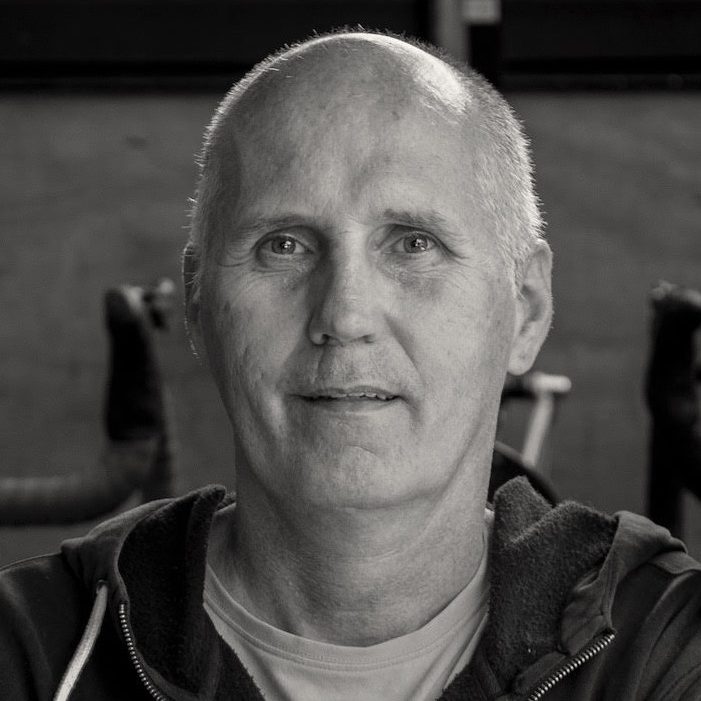Buying a new bike is always exciting, but it can also be stressful, especially when thousands of dollars are involved. It doesn’t matter how many times you take a bike for a test ride, or how good its media and/or customer reviews are, there is no way to forecast how well that bike is going to serve you.
Adding to this challenge is the variety of brands and models on display at your local bike shop(s). The mainstream brands competing for your money do a fantastic job delivering desirable and reliable bikes that are ready to ride for an (often) reasonable price. However, what these brands offer in terms of value and convenience they lack in personalisation.
There is an alternative, though, and that is a handmade bike, which is built on personalisation. Accessing this product can be trickier since you will rarely find them on display at your local bike shop, represented in your local bunch ride, or on the pages of most media. They are like unicorns in the wild, and capturing one takes more effort than bagging a mainstream bike.
Welcome to slow bike manufacturing
Handmade framebuilders were building bikes long before the big brands. Such businesses, the industry’s first direct-to-consumer brands, typically thrived upon local demand, though there are instances when a framebuilder’s reputation would draw customers from other countries (e.g., the late Ugo De Rosa).

“Handmade” is a clumsy moniker for the products of this cottage industry since the bike industry as a whole depends upon human labour to build frames and bikes. “Bespoke” is arguably a better term, because custom framebuilders typically build one frame at a time according to each customer’s specifications. “Custom” is yet another term that is used when referring to this industry and its personalised products.
Both handmade framebuilders and mass manufacturers strive to build beautiful, functional, and reliable bikes, but it is the rate of production that is the biggest distinction between the two. By focussing on the individual needs of each customer, handmade framebuilders eschew the efficiencies of batch production, limited frame sizes, and stock finishes. Adding to their production times is the fact that they are very small operations (often comprising a single person) that choose to employ time-consuming and labour-intensive processes to create and finish their products. Such inefficiencies are easy to forgive because bespoke framebuilders create frames and bikes that cannot be found elsewhere in the industry (though mainstream manufacturers have learnt to emulate this by offering limited edition finishes and builds).
That this business model has persisted (and perhaps blossomed) is a clear demonstration of a very real need. Critics and cynics will always dismiss this market as over-priced and indulgent—something that afflicts all arts and crafts—but it’s a hollow sentiment born out of a lack of appreciation. That mainstream manufacturers often draw inspiration from custom framebuilders is a clear indication of the importance of their place in the bicycle industry.
Ultimately, any bike can be desirable, regardless of its genesis. It’s all a matter of taste and an individual’s specific needs, but if you’re in the market for a new bike and are feeling uninspired (or even alienated) by what the mainstream has to offer, then I encourage you to read on to learn more about how to buy your first handmade bike.

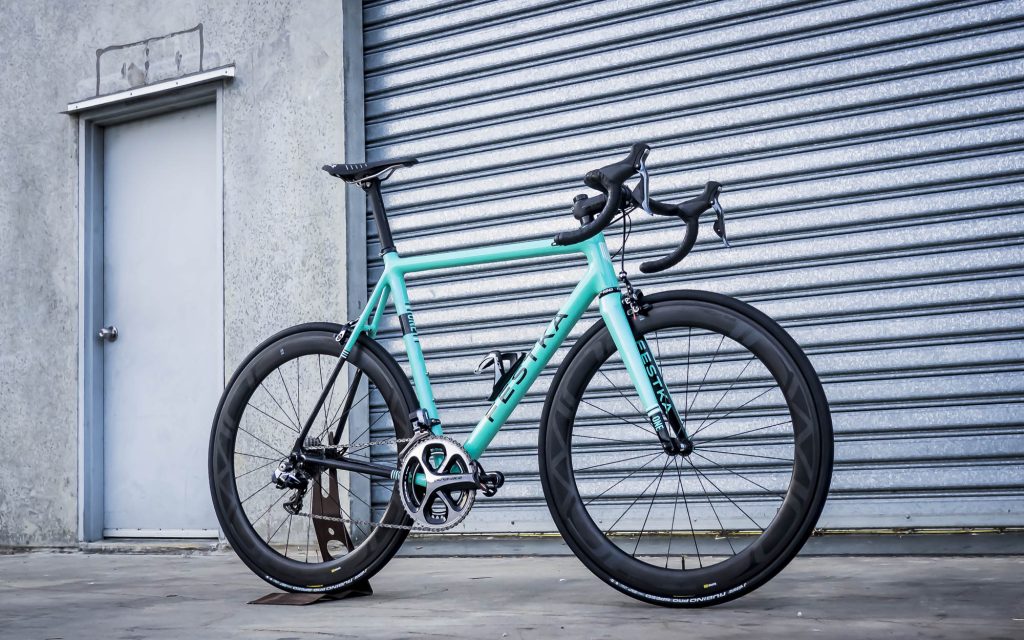

The first step is the most difficult
If you’re not certain this is for you, here are some sure signs that a handmade bike will serve you better than a mainstream product:
1. You are finding it hard to find a mainstream bike that suits your bike fit. This is a common problem for both short and tall riders since mass manufacturers don’t do much to accommodate these populations. Then there are riders with odd proportions (e.g., long legs and a short torso) who find themselves caught in between factory sizes and require one or more compromises (e.g., a short or positively angled stem) to be able to get on the bike. In some instances, such compromises are purely cosmetic, but in others, they can have a detrimental effect on the handling of the bike (e.g., a short stem can make the steering of a road bike extra twitchy).
2. After owning a few different bikes, you are looking for one that provides the perfect blend of your favourite traits, or, for something that has been missing from all of them. If you’ve developed some opinions about what makes for the perfect bike, then you’re ready to start talking to a custom framebuilder.
3. You’ve already bought (or imagined) a custom mainstream bike built with all of your favourite components. Perhaps you’ve even gone so far as re-painting your current mainstream frameset before handpicking the parts for your perfect build. This is another sure sign that you’re ready for a handmade bike because custom building a bike is a gateway drug. It’s a process that takes time and costs more money, but the result is immensely satisfying, especially if you’ve had experience with a variety of groupsets, wheels, handlebars, etc. Adding a bespoke frame to this recipe takes the process to a new level with a result to match.

4. Your big brand loyalty has died or you’re looking for something distinctive. If you’ve lost interest in what mainstream companies have to offer, want to set yourself apart from the crowd, or experience a frame material other than carbon or alloy, then a handmade bike is likely to satisfy. Add in the ability to influence its design, performance, and choice of components, and you will get a bike that is like no other on the planet.
5. You are looking forward to the media coverage of (or attending) this year’s handmade bike shows. If you are as excited about the upcoming shows as I am and will spend more time perusing the resulting media content than mainstream bike catalogues, then this is where your heart truly lies.
6. Your social media feed features more framebuilders than mainstream brands. Go on, tally the numbers.
It’s not about the money
The first, and perhaps biggest, hurdle that anybody contemplating a handmade bike must contend with is the extra cost compared to most mainstream offerings. However, it’s not a fair comparison. Mass manufacturing is not only fast and efficient, but also relatively cheap. The result is a boon for consumers, but it has skewed their expectations.
The handmade bike industry cannot compete with the mass manufacturers on the basis of price (although some mass manufacturers have indeed become quite expensive!), so it doubles down on its strengths, crafting the kinds of bikes that big brands cannot afford to make. It’s a small niche, to be sure, and not just because of the extra expense. Compared to the mainstream, buying a handmade bike is less convenient (but not inconvenient), time-consuming, and slow, all of which makes for a poor fit with today’s fast-paced consumer environment.

However, if you buy a handmade bike, I can almost guarantee you the following: first, you will quickly forget about how much it cost; second, you are much less likely to suffer buyer’s remorse and more likely to own (and ride!) the bike for much longer; third, you will bore your riding buddies with the story behind the creation of your handmade bike.
It’s all about the bike (and your dreams)
Buying a handmade bike is all about getting the bike you want, not the one that is available. Take a moment to let that sink in, then let your imagination take over. Give yourself permission to ignore every constraint (including cost!) and conjure the bike of your dreams. This is truly the first step towards buying a handmade bike.
There is a flipside to this extra creative freedom: it can be difficult, even challenging (and maybe paralysing), to create a bike on your own. Fortunately, you are not trying to re-invent the bicycle, and there are plenty of examples—past and present—from which to draw inspiration. You won’t be alone, either, since your framebuilder will guide you through this process.
A test ride is not necessary (and neither are reviews)
This is perhaps the next major hurdle when buying a handmade bike for the first time. There is a significant amount of money involved, so of course you would like to give the bike a try before buying it. But how do you test ride a bike that has yet to be made?

The very best that you can manage in this situation is to ride somebody else’s handmade bike and leave the rest up to your imagination. Otherwise, you can look towards reviews in the media or feedback from owners, where once again you will have to apply your imagination to anticipate the performance of your new bike. That said, about all you can hope for is just an approximation of what it will be like to ride your new handmade bike.
Thus, buying a handmade bike requires a leap of faith. You have to trust that your framebuilder understands your needs and desires, and that they have the skill and experience to translate them into a bike that caters for them all. For this reason, you need a good understanding of those needs and desires. That’s why I recommend owning a couple mainstream bikes first, then riding at least a few more, so that you understand your likes and dislikes well enough to communicate them to another person.
Start talking to framebuilders (or their agents)
Given the importance of faith to the process of creating a handmade bike, it is worth spending some time with different framebuilders. In this regard, attending a handmade bike show provides an invaluable opportunity to get to know a variety of framebuilders, and viewing their work in the flesh is really quite different from looking at photos. The Handmade Bicycle Show is held annually in Melbourne, Australia. Those in the USA should check out the MADE show in Portland, Oregon, and the Philly Bike Expo. In Europe, Bespoked was previously a place for UK builders, but has grown to become a showcase of Europe’s framebuilder scene.
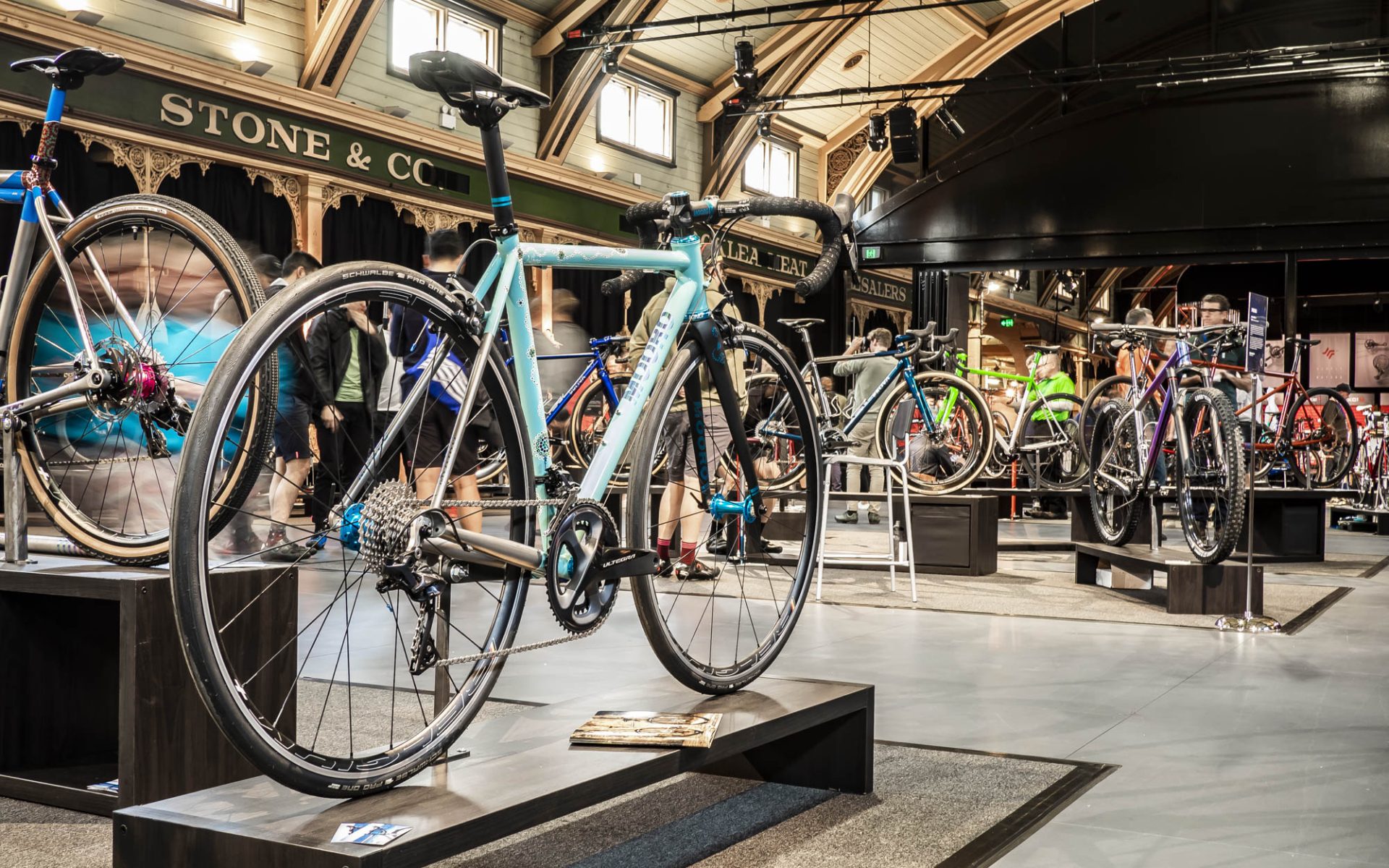
Most reputable framebuilders have a website, which is often easier to visit than a bike show. If you have any interest in handmade bikes, then you’ve probably visited at least some of them, and already know that they often provide a decent introduction to their work. After a return visit or two, it’s a good time to send an email or make a call to get to know them a little better.
The vast majority of framebuilders are not salespeople, and while they will always welcome interest from a prospective buyer, you don’t have to worry about being pressured into a sale. The dynamic is very different from the one that exists on the salesroom floor, and that has a lot to do with the nature of this person-to-person business model. Some framebuilders even like to take their prospective customers out for a ride to chat about their needs.
Getting to know frame builders will also give you an introduction to the range of materials and construction processes that they employ. Most devote themselves to one or two of each, so choosing a framebuilder will limit your choices in this regard. Importantly, while it is possible to rank some of the features of these materials and processes, all are well suited for creating a beautiful and reliable bike. It is better to think of them as ingredients that affect the flavour of the meal, so you simply have to understand your palate in order to decide.
An overview of the common handmade framebuilding materials.
Steel (including stainless steel): Once the cornerstone of the mainstream bike industry (before it was replaced by carbon), steel has enjoyed a resurgence in the last two decades thanks to the devotion of handmade framebuilders. Some of its strengths include its long track record in bicycle manufacturing and its affordability compared to other materials.
Steel tubing is available in a variety of diameters, with and without internal butting, that can be utilised to influence the weight and performance of the frame (and bike). A range of steel recipes (which vary in their elemental composition) with distinctive characteristics (e.g., strength, hardness, and ductility) are also available, which allows the framebuilder to further refine the characteristics of the frame.
Titanium: This exotic, lightweight, and expensive material is another hallmark of bespoke manufacturing. Titanium is a very demanding material to work with compared to steel, which only adds to the expense of the final product.
Like steel, titanium tubing is available in a variety of diameters with or without internal butting. External butting is often used to refine the performance and weight of the tubing, however internally butted tubing is also available. A range of titanium grades also exist, though only two (Grade 5 and Grade 9) are used for bicycle frames.
Carbon fibre: This material hardly needs an introduction given its ubiquity in the bicycle industry. What starts out as a strand with specific tensile and elastic properties is commonly turned into weaved sheets that can be layered in different ways to create moulded forms in the same manner as papier mache. Alternatively, on rarer occasions, the carbon is woven around a form, not wholly unlike basket weaving.
Handmade framebuilders typically use carbon fibre tubing and tube-to-tube construction to create a frame, making use of different diameters, layup patterns, and carbon fibre grades to influence the characteristics of the final product.
Aluminium: Another mainstay of the mainstream industry thanks to its relatively low cost and widespread availability, aluminium is often the material of choice for a more affordable handmade frame. As with the other framebuilding metals, a range of aluminium alloys are available along with a variety of tube diameters and butting profiles that can be used to fine tune the characteristics of the frame.
Also see: Rob English’s guide to why design trumps material.
An overview of handmade framebuilding processes
Brazed lugs: once the method of choice for building steel frames, lugs now occupy a small (but prominent) niche in the handmade bike industry. These cast joints can be embellished in a variety of ways, but their rigid structures dictate the angles of a frame, limiting customisation.
TIG welding: based on an electrical process, TIG welding allows framebuilders working with metals to create frames with custom geometry by employing tube-to-tube construction. When the weld beads are carefully stacked, they make for a pleasing finish, or they can be filled and filed for a smoother joint.
Fillet brazing: this method provides an alternative to TIG welding steel tubing. Heat and a brass filler are combined to create a weld with enormous beads, which is then filed and sanded to yield a luxurious transition.
Bonding: when electricity or heat can’t be used to fuse and weld the members of frame, then framebuilders turn to bonding agents like epoxy adhesives. Carbon fibre frames therefore depend upon these agents, and they are also used to bond carbon members/structures in metal frames (e.g., an integrated seatpost).
3D printing: this technology has grown quickly over the last decade, and framebuilders have embraced additive manufacturing to create complex structures that are either too difficult or time consuming to create in the workshop. This is especially true where titanium is concerned, but steel workers have also started printing frame pieces, including lugs.
While it is not strictly necessary, engaging a local framebuilder offers all sorts of benefits, including sharing the same time zone and language (presumably). You are more likely to get a chance to visit their workshop/showroom, and once your new bike is ready, you won’t have to contend with the risks of shipping your new bike.
If you find that you’re most attracted to a framebuilder outside of the country where you live, then an agent (typically a specialist bike shop) can take care of most, if not all, of the logistical challenges. They will be your surrogate during the ordering process, so it’s worth spending some time getting to know them as well as the framebuilder that has won your heart.
Get into the queue first and worry about the details later
Once you have committed to the idea of buying a handmade bike, it is tempting to hammer out all the details so that you are completely prepared to place your order. However, the first thing that happens after you pay your framebuilder a deposit is nothing. Often, a lot of nothing.
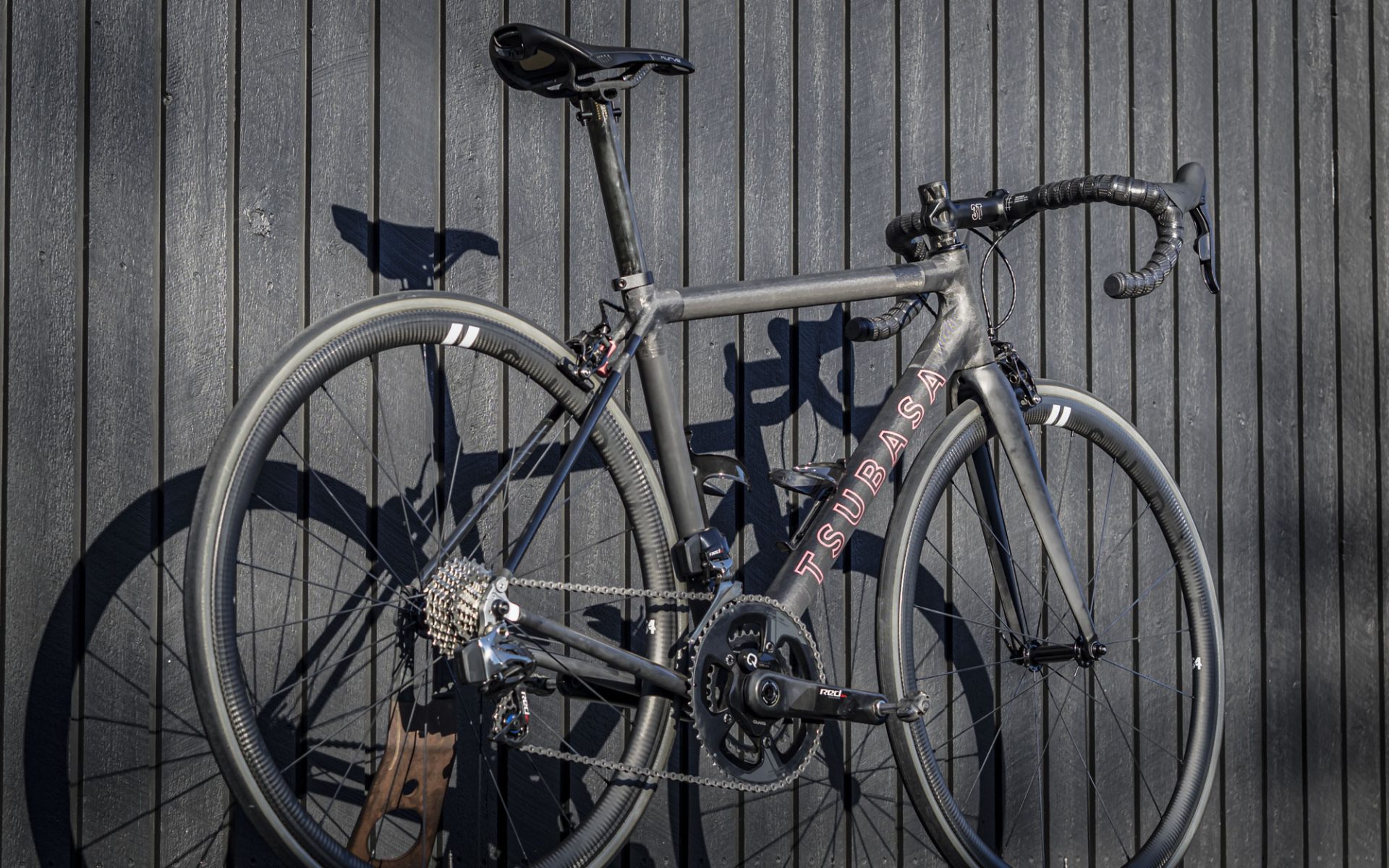
Months may pass before your framebuilder is ready to turn their attention to building your new bike. That’s because they are concentrating on the bikes ahead of you in their queue—one at a time—which is both the curse and the blessing of the bespoke production process.
The only detail that you really need to be sure of before you place your order is that you are confident in the abilities of your framebuilder. Such confidence will grow out of your introductory chats with them as they start to embrace the purpose of your project. From what I’ve observed and experienced, this is often as important to the framebuilder as it is the customer, making for something of a positive-feedback loop that elevates both parties when the chemistry is there.
Once you are in the queue, you will have plenty of time to ponder every detail of your dream build. This may lead to a variety of questions for your framebuilder, which will be worth asking once they are ready to start working on your bike. Grab a notebook or create a spreadsheet and start recording all your thoughts.
One aspect that is likely to occupy a lot of your time is deciding on the finish for your new bike. If the frame is made from steel or aluminium, then it will need to be painted to protect it from corrosion. Stainless steel, titanium, and carbon fibre can be left raw, but all three can be painted, too. Other surface finishes are only available for certain frame materials, such as polishing (titanium and stainless steel), anodization (titanium), and chrome plating (steel).
Most framebuilders include a standard finish as part of the cost of the frame or bike, so expect to pay extra for more elaborate finishes. In this regard, paint offers a huge range of possibilities—including gloss, matte, pearl, metallic, candy, and translucent colours—plus other parts of the bike (such as the fork, stem, and seatpost) can be painted to match or complement the frame. Not all of these options will necessarily be on offer (or in combination with other surface finishes), but you will still be spoilt for choice.
While you’re waiting in the queue, take the opportunity to get a professional bike fit. Some framebuilders offer this service; otherwise, they will be able to recommend a trusted fitter. This fit is crucial for customised frame geometry, and your framebuilder will need accurate measurements for the position of each contact point (handlebars, saddle, and pedals) relative to the bottom bracket before they can start designing your frame.
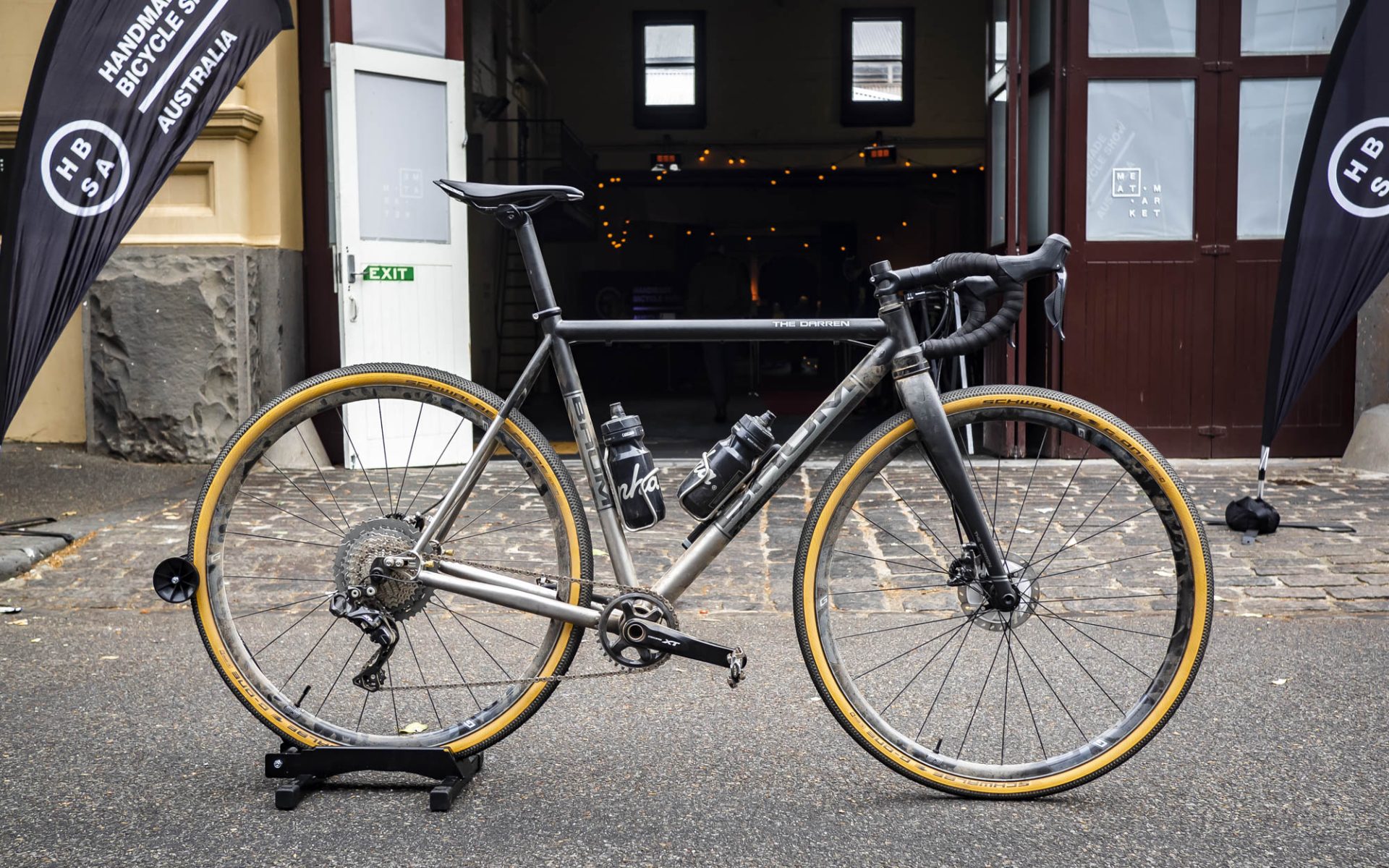
Importantly, these numbers will be contingent upon the specific saddle and handlebars (and levers, if it’s a road or gravel bike) that are used during the fitting session, so the make and model of each needs to be decided ahead of time and adhered to. That’s because there is enormous variety in the dimensions of each, which will affect where they will need to be positioned for your ideal fit.
There is one other thing to note about a bike fit: strive for an absolute bike fit on a professional fitting device rather than your current bike. These devices essentially offer no constraints on the position of each contact point, and therefore, provide millimetre accuracy. In contrast, modifying an existing bike is constrained in many ways (e.g., by discrete stem lengths and angles) that reduces the accuracy of the fit to centimetres.
Be prepared for a lot of questions
Once your framebuilder is ready to start designing your bike, they will need a very clear brief for what you want and expect from the new bike. Now is the time to share all of those details that you’ve been pondering, so prepare to be completely indulged. You may have bored your spouse, family, and friends with all of these details, but your framebuilder will want all that you have to offer, plus more.
Expect to be challenged on some of your ideas and expectations, because as much as anything is possible, there will be constraints. Some will be based on product incompatibilities, others on the framebuilder’s choice of materials and production processes, and still others on their design language and aesthetics. It is also important to remember that mainstream norms (e.g., certain head tube angles, fork rakes, or chainstay lengths) do not necessarily apply to handmade bikes.

Handmade framebuilders know a lot about bikes, and not simply from a manufacturing perspective. They have a passion for the sport and have experimented with its equipment, often for years and in a variety of contexts. They know their product and how to get the most out of it, which is why there may come a time during the design phase when you may not understand or even agree with the direction that they are urging you to go.
Such moments may test your faith (and patience), and if so, the only thing you stand to lose is your deposit (which is not normally refundable). Such irreconcilable differences are extremely rare, though. The important point here is that while customer satisfaction is important to framebuilders, their own satisfaction generally trumps all, and rightly so, because they have to put their name on the final product.
The ultimate goal of the design process is a blueprint for your new handmade bike, which normally takes the form of a CAD file that you can hold closely until it is brought to life. Like most bike geeks, I enjoy studying the details of geometry charts, but nothing compares to the thrill of your very own, so take a few moments to savour this important milestone.
Your framebuilder will normally provide some time for you to re-consider all of the details before you sign off on the project and production can commence. Yes, you will be one important step closer to your new bike, but try to manage your expectations, because there is still a lot of work ahead for your framebuilder.
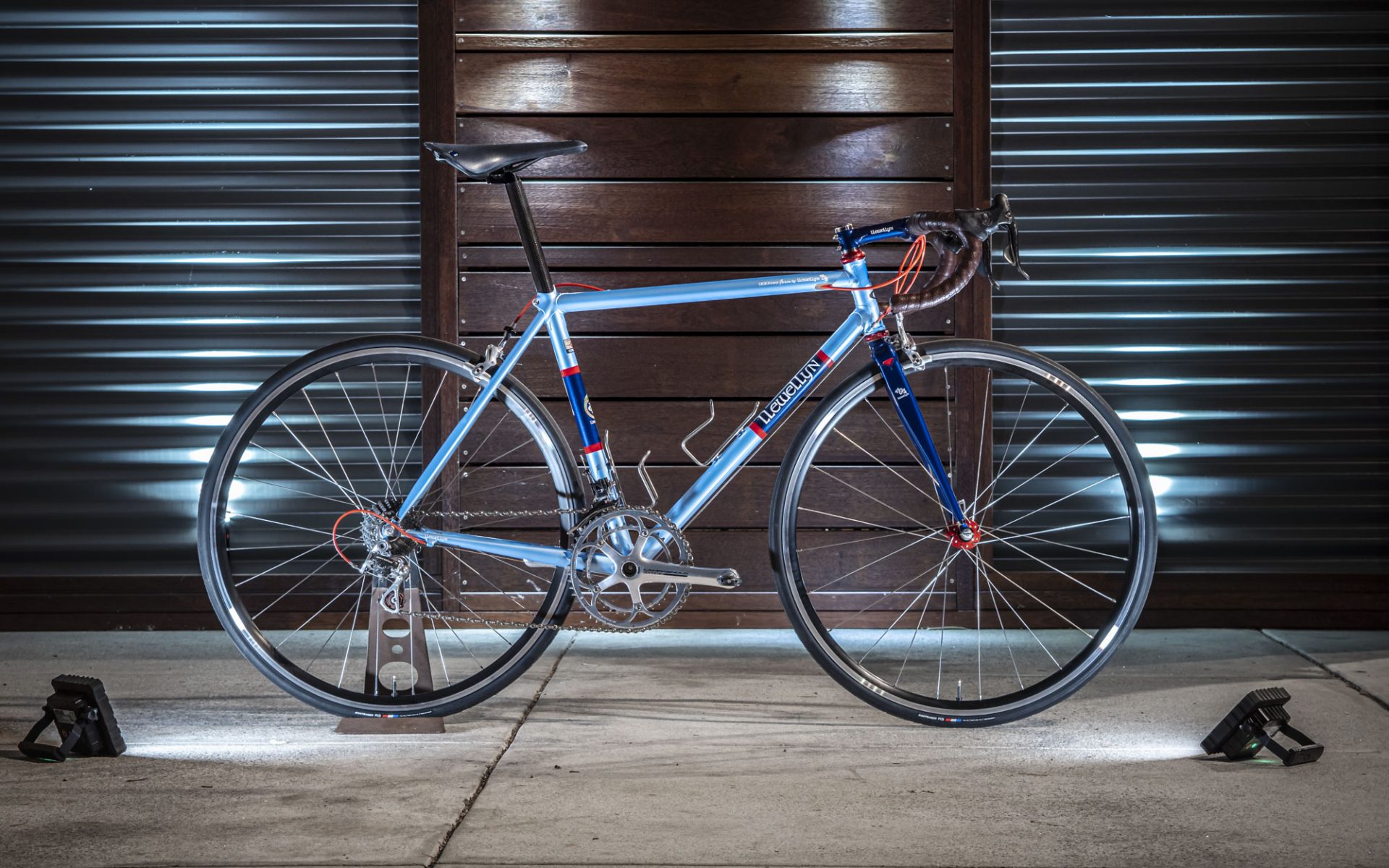
Stop bugging your framebuilder
You may have endured months of waiting, and perhaps the forecasted production date has come and gone, but contacting your framebuilder for regular updates will not accelerate the process. Indeed, any time that they spend answering your calls or emails is time that they are not spending in their workshop.
Some framebuilders like to send their customers photos of their progress, but this is not something you can expect. Such updates can actually be a disservice, raising expectations and increasing your anticipation long before the finished bike is ready for delivery. Remember, this is slow bike manufacturing.
Savour the journey
Every step in the process of creating a handmade bike is a chapter in the story of your new bike (including the wait!). So, try to give yourself over to the story and inhabit the sentences and paragraphs as they appear on the page before you, because it promises to be a journey like no other.
There is more to come, of course. As the story of the creation of your handmade bike comes to an end with its delivery, a new one begins once you throw your leg over it. This is a moment that can be as delightful as it is unsettling as your expectations collide with reality. What happens next can’t be scripted, but from what I’ve witnessed and experienced, you’re very likely to end up wearing a pretty idiotic smile on your face.
What did you think of this story?
